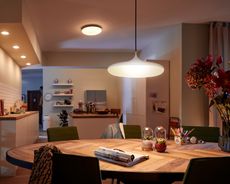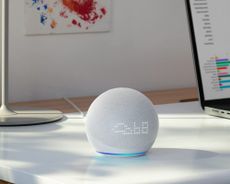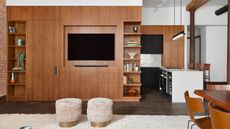How to save water – 8 design and tech ideas to make your bathroom more eco-friendly
Learn how to save water in the bathroom with these design tips and by embracing new smart home tech
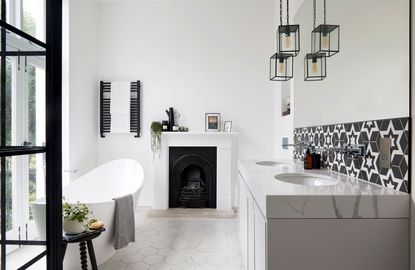

There are ways to learn how to save water throughout the house, but nowhere is it more important than in the bathroom. Yes, there are easy ways you can change your behavior to help conserve water – especially if you're guilty of leaving the tap running while you brush your teeth – but water-saving can also be designed into the very fabric of your bathroom.
But do you really need to bother? Many of us only think of conserving water when there's a usage restriction in place, but it's an important part of our overall environmental footprint. Saving water should be something you consider no matter where you live in the world.
Saving water helps to reduce energy use and saves you money, while also limiting the amount of wastewater, which can be polluting. For the green-minded, it's a new non-negotiable for sustainable living when looking for modern bathroom ideas. 'How we enjoy our bathrooms is becoming intrinsically linked with how we adopt a more sustainable existence,' says Emma Scott, director of design at C.P. Hart.
To help start you off on the right foot, we've asked bathroom design experts for their top design tips and the latest gadgets that make sure every last drop of water counts.
1. Switch to a water-efficient showerhead

Your choice of showerhead can make a pretty significant difference to your bathroom's water usage. Depending on the style of shower you have, making this change can be a relatively easy bathroom idea – as simple as unscrewing the old showerhead and putting on a new one.
But how can you tell if a shower is saving you water? 'Innovative spray technologies that combine this water-saving element with luxury showering are key,' explains C.P. Hart's Emma Scott. 'RainFinity from Hansgrohe, for example, boasts a concave spray surface and diffused arrangement of jet disc holes which is deliberately designed to softly cocoon the body whilst consuming less water.'
Choosing water-efficient showerheads doesn't mean an unsatisfying showering experience either. Many styles of water-saving showerheads combine water with air to make a powerful spray that rivals the best power shower.
Look out for a shower's flow rate as an indication of how much water it uses. 'When it comes to an eco-friendly water flow for a shower, we’d expect to see a flow rate of about 2.5 gallons a minute compared to the standard shower flow rate being between 3 and 4 gallons a minute,' explains Paul Bailey, a category specialist leader for Grohe UK.
There's even a new showerhead that could cut your shower's water consumption down to 0.5 gallons per minute.
2. Choose quality shower controls

While showerheads might be the easiest way to save water, don't discount the controls you choose too. 'A shower mixer controls the flow of water in a similar way to the tap on a basin, and the best thermostatic showers carefully mix the hot and cold water supply, recognizing changes to water pressure or temperature,' explains Erdem Akan, design director at VitrA. 'So if a tap, bath or toilet is used elsewhere in the home, the shower will remain at the chosen temperature. As a result, water and energy consumption is reduced with the sustained temperature.'
Also look for distinct eco-controls incorporated into shower room ideas that can be used to conserve water as needed. VitrA's Aquaheat is a great example, as the hand shower incorporates a water-saving button that controls the flow of water to minimize consumption or to change the shower spray as and when you want.
3. Ensure your WC has a dual flush

So what's the biggest culprit for water usage in your bathroom? Of course, it's the WC. The basics of water-saving for this bathroom essential isn't some new technology or the latest bathroom trend, but the humble dual flush.
'It is estimated that an average household uses nearly 9 gallons of water from flushing alone every day, therefore, many are choosing a more efficient toilet that can make a substantial difference,' says Holly Aspinall of Geberit. 'I suggest looking into innovations such as cisterns with dual flush technology as just one easy way to reduce water consumption.'
4. Specify a shower WC
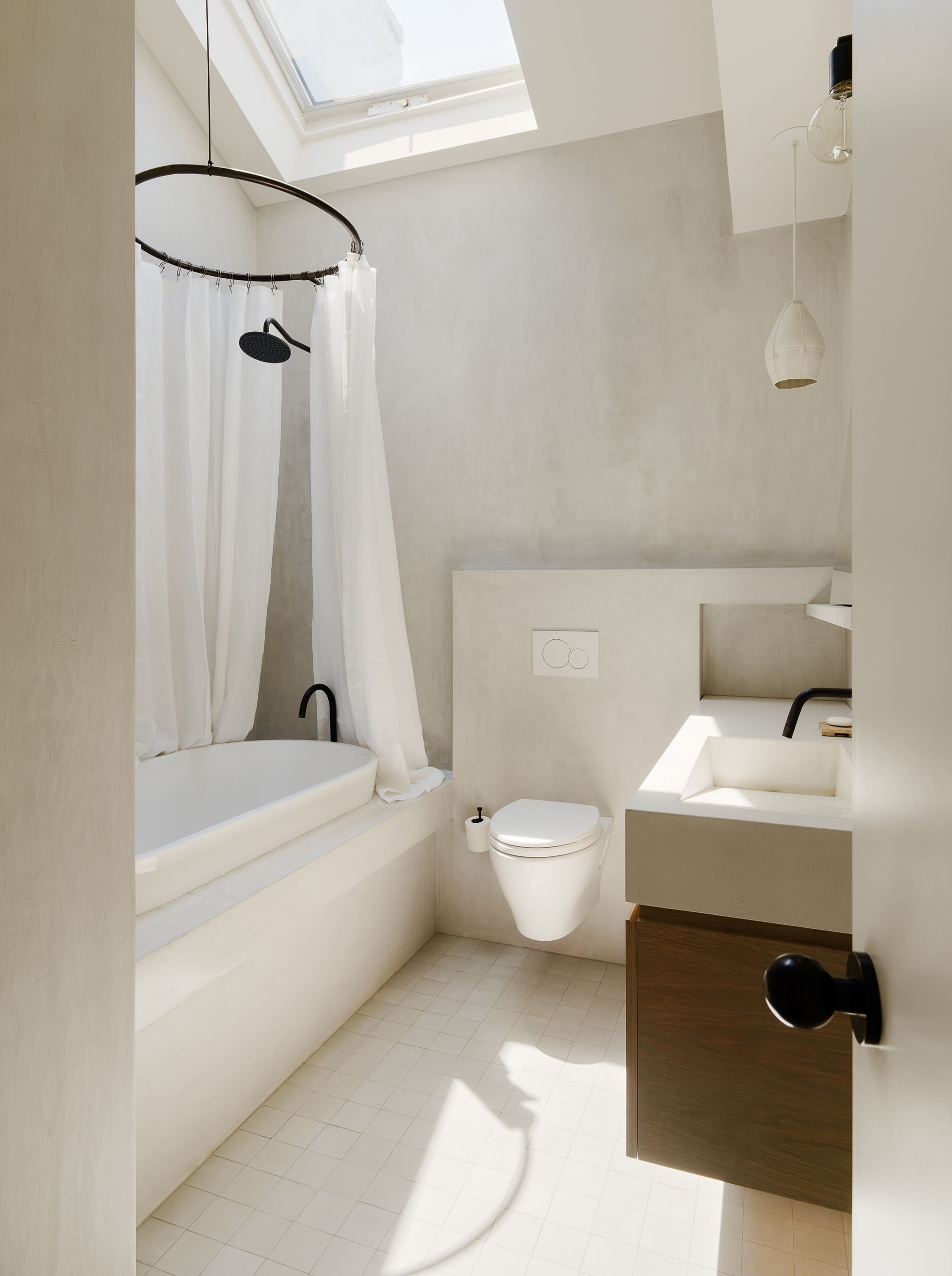
A bidet or shower toilet surely increases the amount of water your bathroom uses, right? Well no, not necessarily. In some instances, you need to take a more holistic view of your water consumption that goes beyond the four walls of your eco bathroom.
'Did you know that a single roll of toilet paper uses 37 gallons of water to manufacture?' asks VitrA's Erdem Akan. 'Bidets and shower toilets are a growing trend – not only do they provide a more hygienic experience, but they are also better for the environment as they regulate toilet paper waste. On average, toilet paper usage is reduced by 75% when using a shower toilet.'
5. Look for smart temperature taps

Some new innovations in bathroom fixtures may be designed to provide convenience when using this space, but there's often a side effect of making you more water-conscious too.
'One of GROHE’s most recent innovations in water-saving bathroom products was the launch of the GROHE Plus tap with LED display,' says Paul Bailey, a category specialist at Grohe. 'It comes with a chic acrylic screen which hosts a LED temperature display, resulting in considered consumption with warm water often running unnecessarily.'
This bathroom sink idea means you can get a better grasp on when water is at the right temperature, meaning less time spent leaving the tap running.
'The tap further supports reduced water consumption thanks to its Spray function which allows the user to easily switch between a sustainable standard spray of 1.5 gallons a minute and an even greener water-saving flow of 1 gallon a minute by just a wave of a hand over the lit icon,' explains Paul.
6. Install a water leak sensor
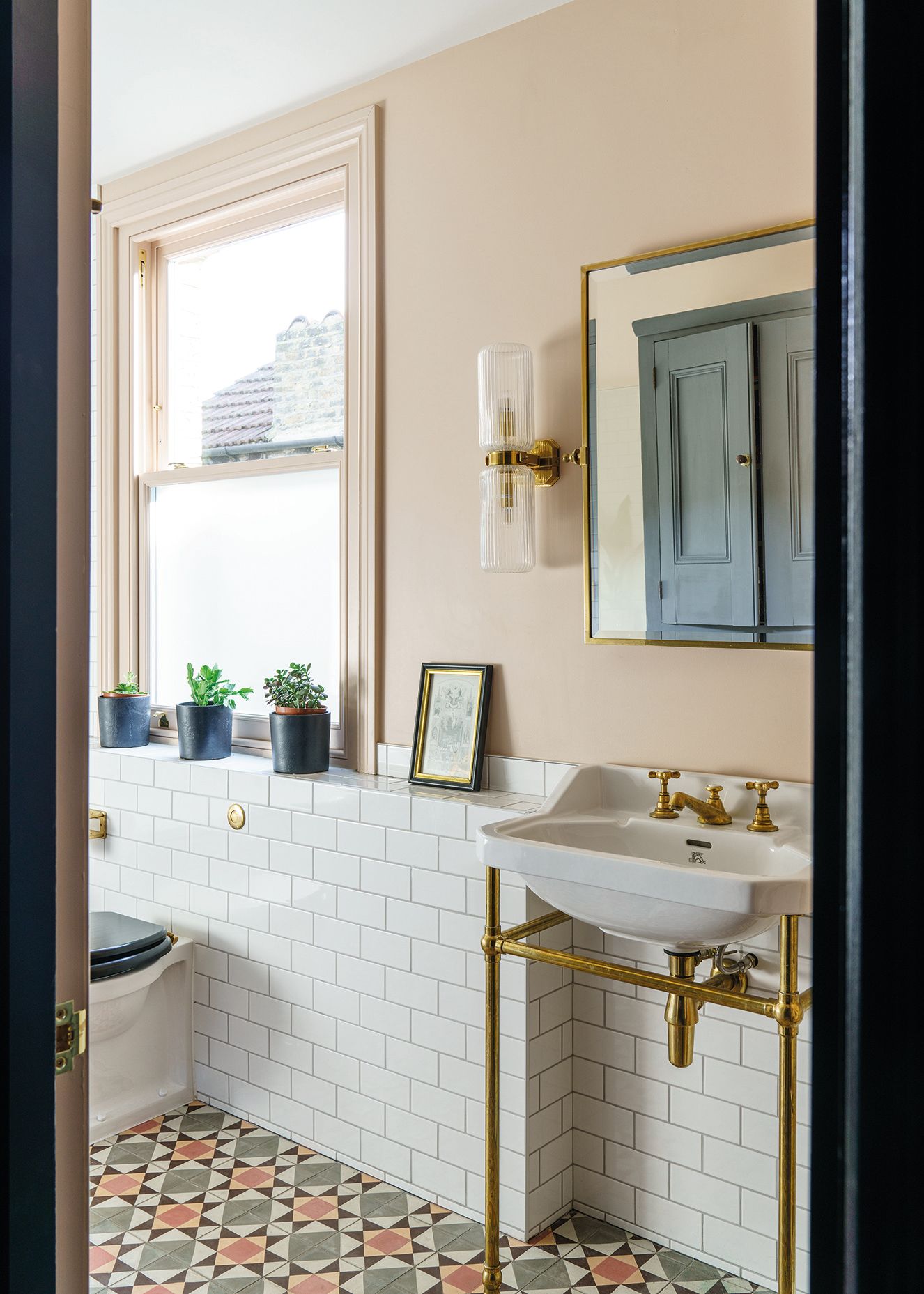
According to the Environmental Protection Agency, leaks can account for 10,000 gallons of water wasted in the average US home each year, and a dripping faucet at just one drip per second can make up some 3,000 gallons of that.
Enter the new tech essential for your home – smart water leak detectors.
'Many homeowners consider safeguarding their home with a water leak detector as it can offer peace of mind, explains Paul. 'It has the potential to save homeowners from extreme water wastage as a result of flooding and save potentially hundreds or even thousands of pounds in repair costs if a continued leak goes undetected.'
Devices such as Grohe's Sense can be connected to another device to automatically shut off the mains water supply for a fully automated home, while Kohler's H2Wise+ can be used to undertake whole home diagnostics and discover any hidden issues lurking in your pipes.
7. Choose a water-saving bath design
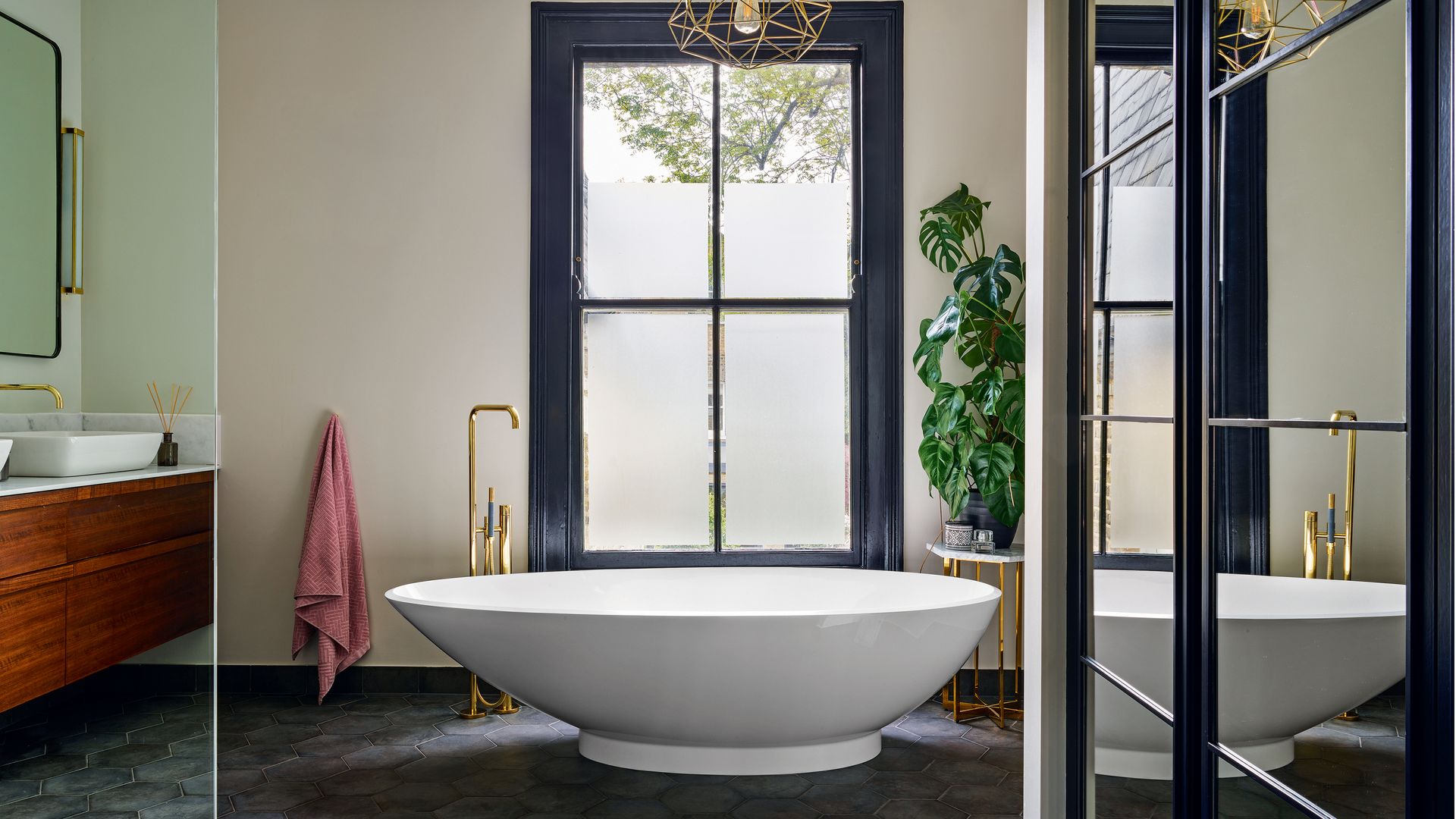
Okay, so there might not really be a guilt-free bath when it comes to conserving water – you're always going to save more water having a shower than a bath. But, in reality, some people just like having the occasional bath – so how can we make them more water-efficient at the design stage?
Water-saving baths aren't always synonymous with space-saving ones, but sometimes they can be one and the same which is useful for small bathrooms. Angled corner baths that taper off towards the foot end can offer you a comfortable bathing experience but used less water than a full-size bath.
Designs like VitrA's Balance bath are shallower than normal bathtubs, and have a gentle gradient, so that the foot-end of the bath is raised and uses less water to fill the whole bath.
These designs might not be best suited for all households, especially if you're particularly tall, but for some, they're the best route to more water-conscious bathing.
8. Use tech to fill the bath to the perfect level

Have you ever left the bath running to come back to it, only for it to be overfilled, too hot or too cold to get into? Draining away bathwater and re-running it will account for a huge waste of water, as well as a drain on your time.
There are some brilliant innovations when it comes to this problem, including Kohler's PerfectFill bath. This clever product allows you to set the exact temperature and depth of your bath. You then let the smart tech do the hard work, so you can go about your business as the water runs and come back to the perfect bath every time.
Does saving water in the bathroom mean lower water pressure?
Water-saving fixtures do not necessarily affect water pressure, they just help to regulate water usage and waste.
For example, smart features such as smart flush plates or sensor taps are designed to release the right quantity of water for the task, helping you to monitor and conserve usage in one simple action.
Shower pressure is a big concern when it comes to making changes to fixtures that conserve water, but the latest showerhead technology can infuse your water with air for powerful water jets, while reducing the overall gallons used per minute.
Be The First To Know
The Livingetc newsletter is your shortcut to the now and the next in home design. Subscribe today to receive a stunning free 200-page book of the best homes from around the world.

Hugh is the Editor of Livingetc.com. From working on a number of home, design and property publications and websites, including Grand Designs, ICON and specialist kitchen and bathroom magazines, Hugh has developed a passion for modern architecture, impactful interiors and green homes. Whether moonlighting as an interior decorator for private clients or renovating the Victorian terrace in Essex where he lives (DIYing as much of the work as possible), you’ll find that Hugh has an overarching fondness for luxurious minimalism, abstract shapes and all things beige. He’s just finished a kitchen and garden renovation, and has eyes set on a bathroom makeover for 2024.
-
 How to Thaw a Frozen Pipe — Learn Everything You Need to Know in 5 Minutes With This Guide
How to Thaw a Frozen Pipe — Learn Everything You Need to Know in 5 Minutes With This GuideWinter storm caught you off guard? We asked an expert — just how do you thaw a frozen pipe?
By Hugh Metcalf Published
-
 The 12 Very Best Silk Bedding Pieces — As Our Style Editor Says: 'It's What Dreams Are Made Of!'
The 12 Very Best Silk Bedding Pieces — As Our Style Editor Says: 'It's What Dreams Are Made Of!'Slumber in lustrous luxury with the very best silk bedding sheets, duvets, pillowcases, and more — your sleep score will thank us later
By Julia Demer Published
-
 6 Resolutions to Make Your Smart Home Better in 2024 — This is How to Get More From Your Tech
6 Resolutions to Make Your Smart Home Better in 2024 — This is How to Get More From Your TechMake your smart home work better for you in the new year with these tips to get things firing on all cylinders
By Alan Martin Published
-
 How to Stop Alexa Suggestions - It's so Easy to Turn Off Unwanted Advice From Your Smart Speaker
How to Stop Alexa Suggestions - It's so Easy to Turn Off Unwanted Advice From Your Smart SpeakerCut down on your Amazon Echo’s follow-up spam with this foolproof method.
By Alan Martin Published
-
 I lost my TV remote – how can I control my TV now?
I lost my TV remote – how can I control my TV now?There are plenty of options for people whose TV remotes have been lost or simply stopped working
By Alan Martin Published
-
 How to add Apple TV as a HomeKit home hub - and why it's a good idea for your smart home
How to add Apple TV as a HomeKit home hub - and why it's a good idea for your smart homeYour Apple TV box can be the center of your smart home. Here’s how to set it up as your HomeKit home hub
By Alan Martin Published
-
 What are the options for an Apple HomeKit home hub? An expert's verdict on which is best
What are the options for an Apple HomeKit home hub? An expert's verdict on which is bestIf you want to set up an Apple HomeKit home hub, you have three options — but one has a big drawback
By Alan Martin Published
-
 How to turn your HomePod or HomePod mini into the ultimate speaker for your TV
How to turn your HomePod or HomePod mini into the ultimate speaker for your TVWant your HomePod speaker to start pulling its weight? Here's how to use it as the ultimate audio booster for your TV.
By Caroline Preece Published
-
 Can Apple 4K TV work on any TV? We explain how to get the best of streaming, even if you have an older set
Can Apple 4K TV work on any TV? We explain how to get the best of streaming, even if you have an older setWondering if the Apple TV 4K streaming device will work with your TV? We have the answers
By Caroline Preece Published
-
 'Avoid the "soap opera" effect' – 4 tweaks you should make to your TV settings to improve your watching experience
'Avoid the "soap opera" effect' – 4 tweaks you should make to your TV settings to improve your watching experienceYou may want to get stuck into your shows immediately, but take a moment to calibrate your new TV for optimal performance
By Alan Martin Published


